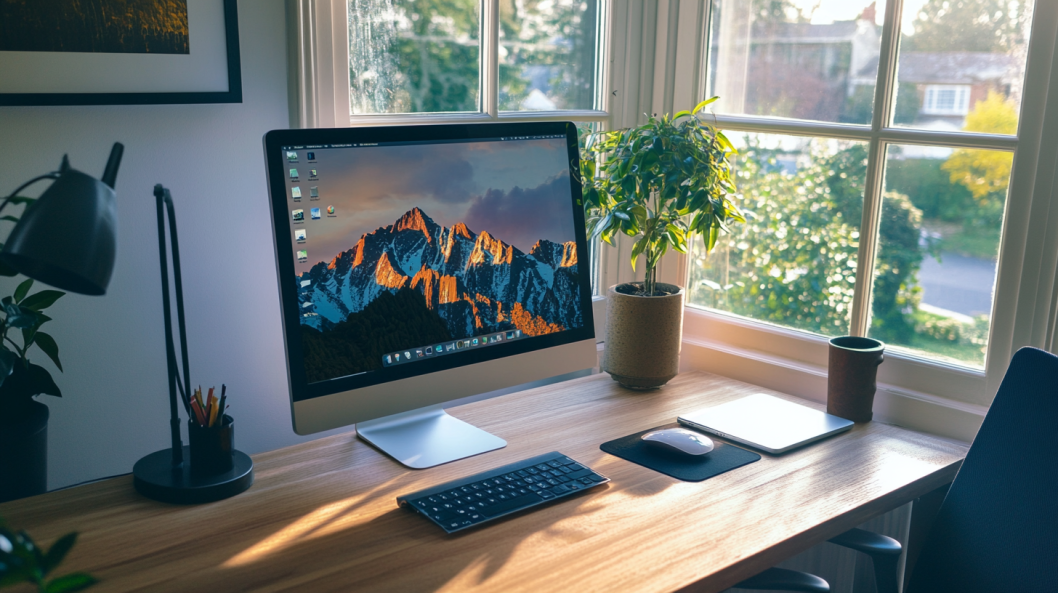Creating a conducive workspace is essential for productivity, well-being, and overall job satisfaction. As many of us continue to work remotely or seek to improve our office environments, understanding how to create a comfortable workspace becomes increasingly important. The Occupational Safety and Health Administration (OSHA) highlights the importance of ergonomic practices to prevent musculoskeletal disorders (MSDs), providing guidelines that include optimising desk ergonomics to reduce these risks effectively.
I have seen the profound difference that a well-designed workspace can make. A comfortable and efficient workspace boosts productivity and significantly impacts mental and physical well-being. Health & safety practice is essential because it provides the knowledge and strategies to create such an environment. By learning and applying ergonomic principles and safety practices, you ensure that your workspace supports your tasks while minimising the risk of injury and promoting overall health, whether you work from home or in a traditional office setting. Here are some tips and tricks to help you craft an environment that promotes comfort and efficiency.
1. Ergonomic Furniture
Investing in ergonomic furniture is key to creating a comfortable workspace. An adjustable chair with proper lumbar support helps prevent back strain, while a desk at the right height ensures that you can work comfortably without straining your arms or shoulders. Consider an ergonomic keyboard and mouse to reduce the risk of repetitive strain injuries.
2. Optimal Lighting
Good lighting is vital for reducing eye strain and maintaining productivity. Natural light is ideal, so position your desk near a window. Choose a desk lamp with adjustable brightness for artificial lighting to minimise glare and create a well-lit workspace. Combining task lighting with ambient light can also help reduce shadows and ensure a pleasant working environment.
3. Personalised Touches
Adding personal touches to your workspace can make it more inviting and enjoyable. Incorporate items like plants, artwork, or photos that inspire and make you feel at ease. Personalisation enhances the aesthetic appeal of your workspace and helps create a sense of ownership and comfort.
4. Clutter-Free Zone
A cluttered workspace can lead to distractions and stress. Keep your desk organised with trays, organisers, and cable management solutions to prevent clutter from accumulating. Regularly declutter and keep only essential items within arm’s reach to maintain a tidy and focused environment.
5. Comfortable Temperature
The temperature of your workspace can greatly affect your comfort and productivity. Aim for a temperature that’s comfortable for you, whether that means using a fan space heater or adjusting the room’s thermostat. Dress in layers to adapt to changing temperatures throughout the day.
6. Adjustable Desk
An adjustable desk allows you to switch between sitting and standing, which can reduce the risk of developing musculoskeletal issues. Standing desks or desk converters offer flexibility and can help you stay more active throughout the day.
7. Acoustic Considerations
Noise can be a major distraction, so consider acoustic treatments if your workspace is noisy. Use noise-cancelling headphones, white noise machines, or soundproofing panels to create a quieter environment. A calm and quiet space can help you concentrate better and be more productive.
8. Regular Breaks
Even with a comfortable workspace, taking regular breaks is important to avoid burnout and maintain mental clarity. Implement the Pomodoro Technique or set reminders to stand up, stretch, and move around. Taking breaks helps refresh your mind and reduces physical strain from prolonged sitting.
9. Proper Desk Setup
Ensure your desk setup is ergonomic. Your monitor should be at eye level to prevent neck strain, and your keyboard and mouse should be positioned so your elbows remain at a 90-degree angle. Adjust your chair so your feet are flat on the floor, and your knees are at a right angle.
10. Health and Wellness Integration
Consider integrating elements of wellness into your workspace. A small exercise ball or resistance band can provide a quick workout break, while a water bottle ensures you stay hydrated. Incorporating elements that promote physical and mental well-being can enhance your overall comfort and productivity.
Creating a comfortable workspace goes beyond simply arranging furniture; designing an environment that nurtures your well-being and optimizes your productivity. You can craft a visually appealing space that fosters comfort and focus by prioritising elements like ergonomics, lighting, personalisation, and wellness. Thoughtful design choices can enhance physical well-being, reduce stress, and elevate overall job satisfaction. A well-balanced workspace can significantly affect how you feel throughout your workday, contributing to a more successful, enjoyable, and sustainable work experience.





